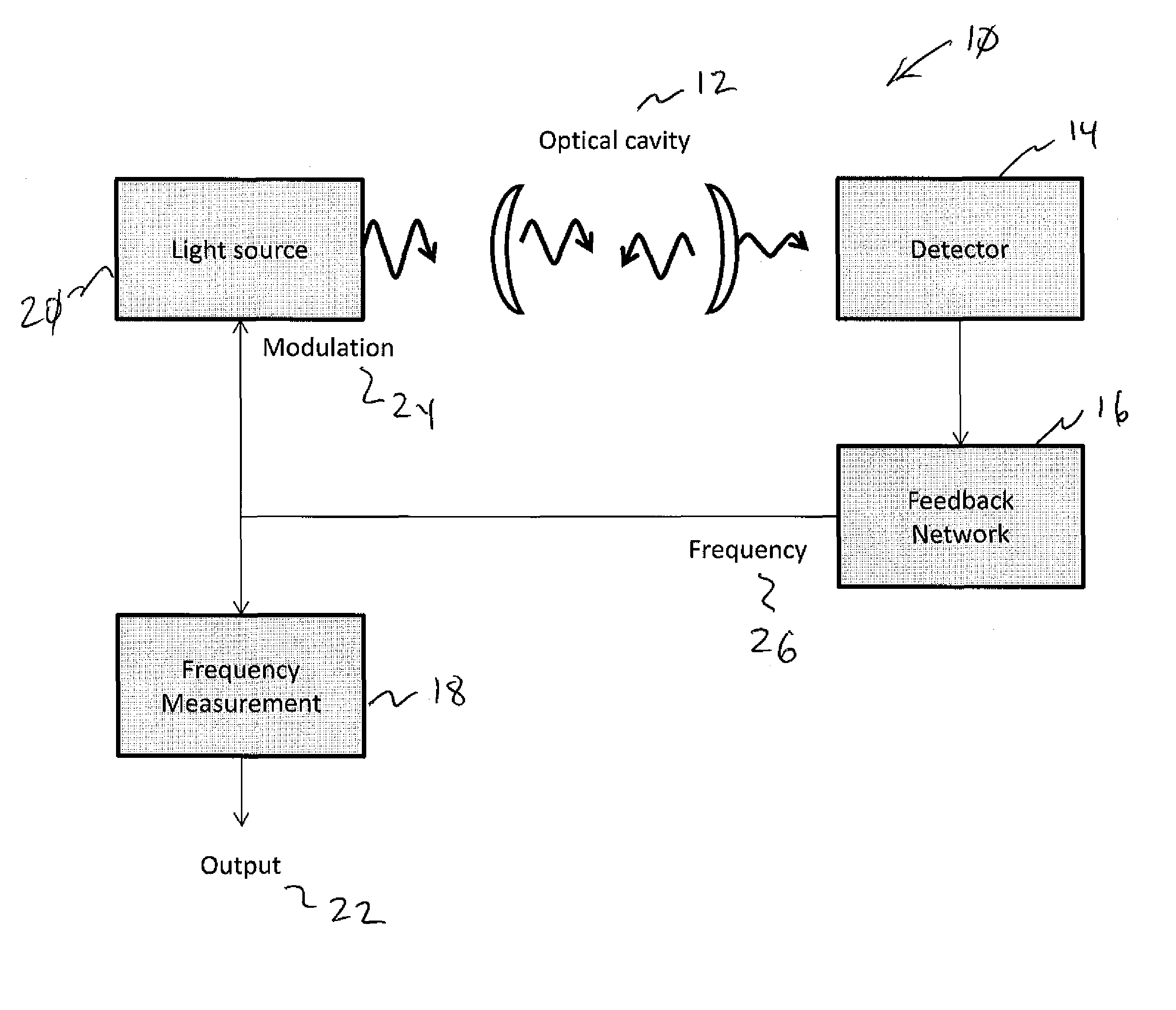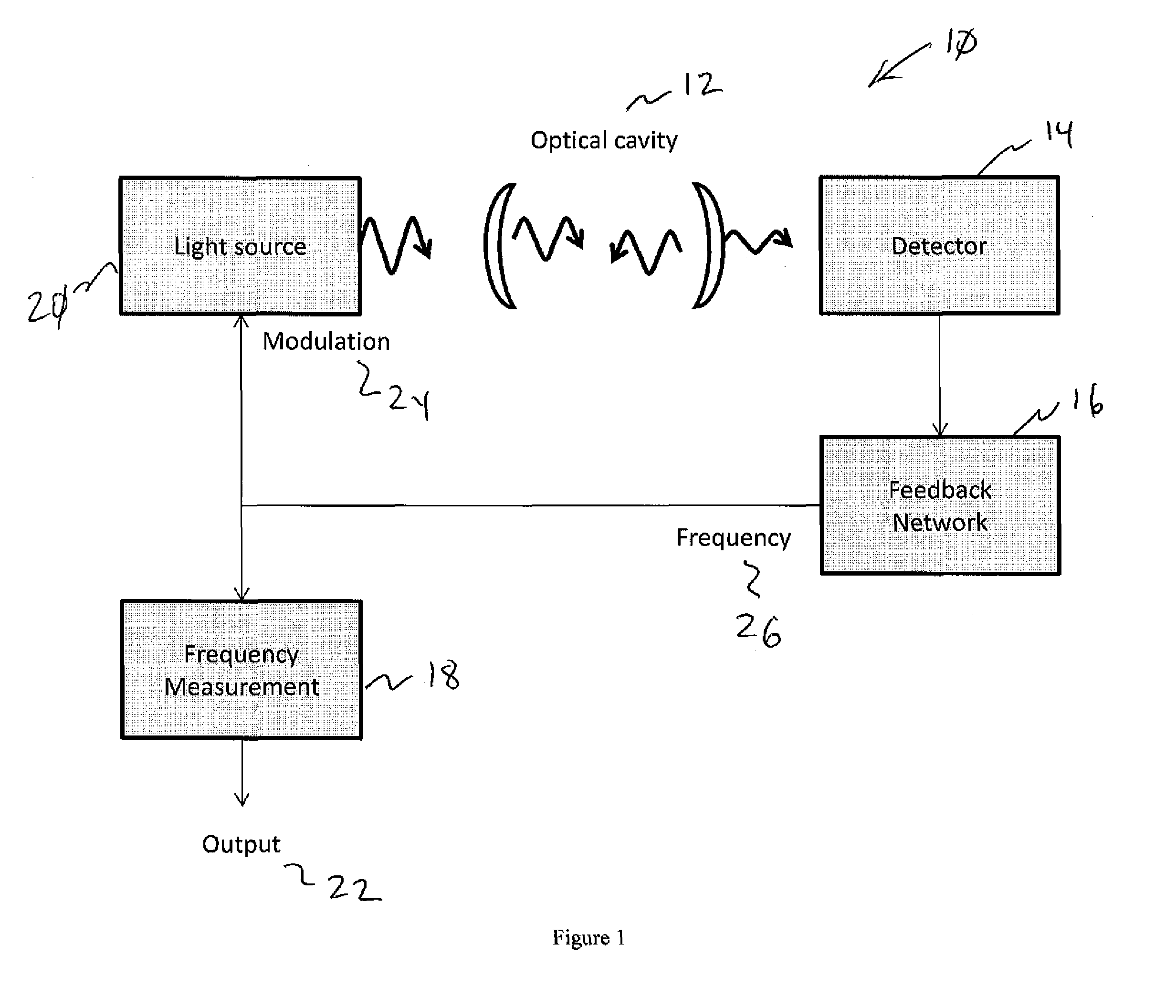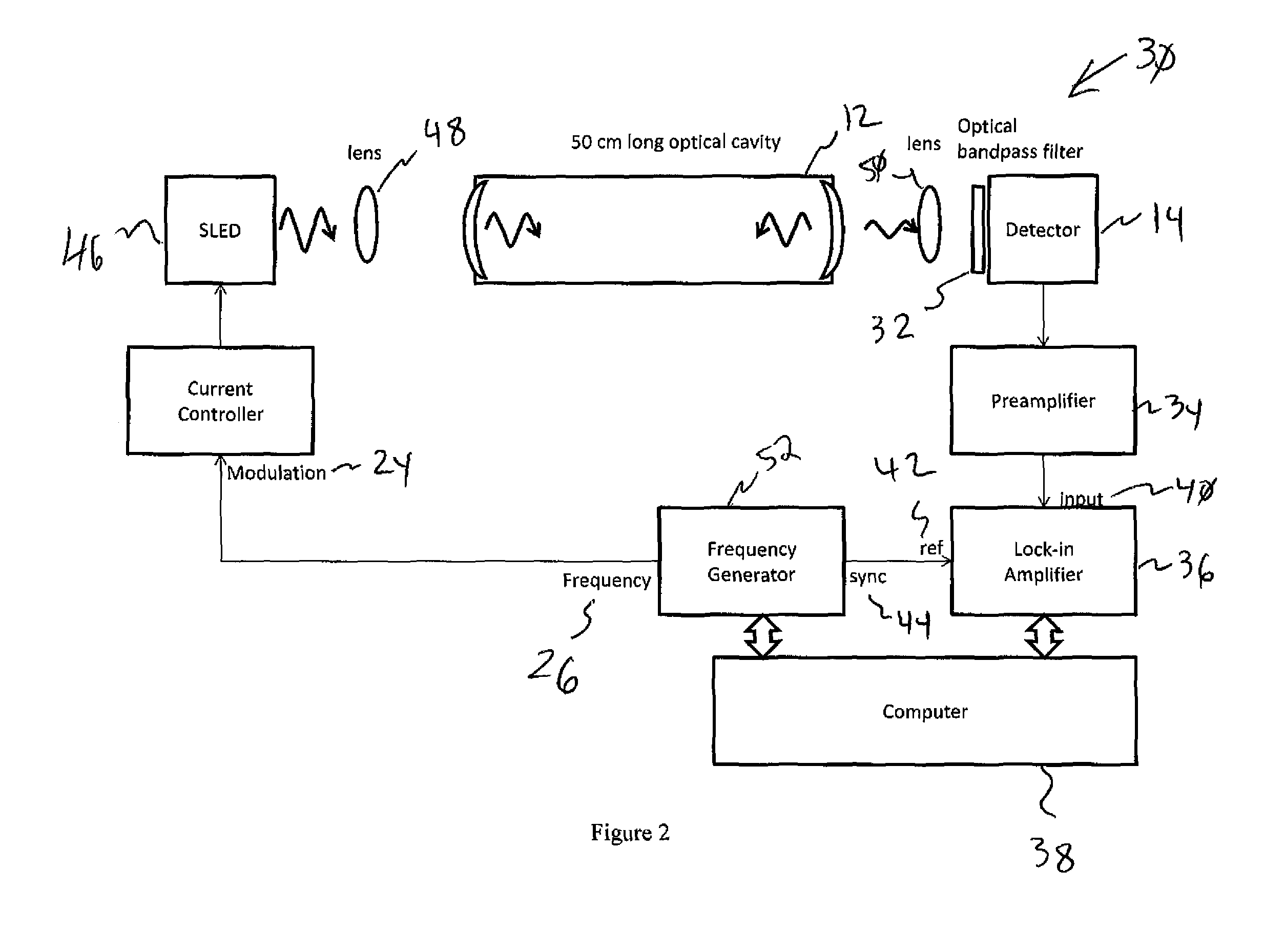Frequency-feedback cavity enhanced spectrometer
a cavity-enhanced, frequency-feedback technology, applied in the field of cavity-enhanced absorption spectroscopy, can solve the problems of affecting the lifetime of the cavity, the recording rate must be significantly faster than the cavity lifetime, and the signal depends not only on losses
- Summary
- Abstract
- Description
- Claims
- Application Information
AI Technical Summary
Benefits of technology
Problems solved by technology
Method used
Image
Examples
Embodiment Construction
[0028]The present invention can measure the losses in an optical cavity without requiring a careful measurement of the amplitude of the detection signal. The invention does not require careful adjustment of the relative gains of two amplifiers. The invention does not require a microphone or an acoustic resonance frequency. The invention does not require a linear, calibrated phase detector. The invention operates at the most sensitive frequency regardless of changes in the optical losses within the cavity.
[0029]For purposes of the specification and claims, the following definitions are employed: Light means electromagnetic radiation regardless of wavelength or energy. Modulation means a method for changing the amplitude, phase, or frequency of light. Detector means a device that can produce an electrical signal proportional to the power or intensity or electric field of the light that is incident on the detector. Optical path means the distance a photon travels through the sample bef...
PUM
 Login to View More
Login to View More Abstract
Description
Claims
Application Information
 Login to View More
Login to View More - R&D Engineer
- R&D Manager
- IP Professional
- Industry Leading Data Capabilities
- Powerful AI technology
- Patent DNA Extraction
Browse by: Latest US Patents, China's latest patents, Technical Efficacy Thesaurus, Application Domain, Technology Topic, Popular Technical Reports.
© 2024 PatSnap. All rights reserved.Legal|Privacy policy|Modern Slavery Act Transparency Statement|Sitemap|About US| Contact US: help@patsnap.com










